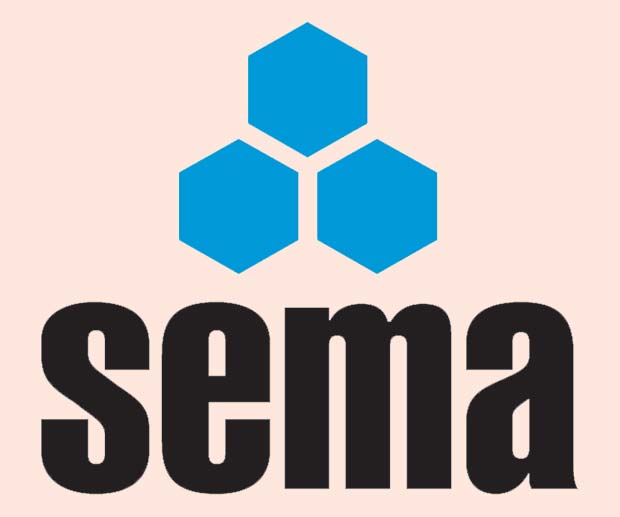Our first question this month asks about locking pins and our second asks about the maximum depth of pallet racking.

Locking Pins
Q. We have done an inspection on a site where we found six locking pins per beam level. We advised the client that you only need two (one on each side) as six might cause more damage as what it is designed for. They would like confirmation from SEMA if this is the case or must there be one for each hole allowed?
My understanding and why we manufacture three holes per connector is that you might find a situation where the bracing or something is in the way of a hole. This allows you to use a different hole?
A. SEMA would agree with your assessment and the reasoning behind it. Rack manufacturers normally only require a single connector lock per connector which achieves the mandatory 0.5 tonnes uplift resistance per connector before shearing. In your case it would seem you would have well over 1.5 tonnes per beam end before disengagement of the beam takes place.
With a single pin this allows the beam to come free at a relatively light uplift and therefore hopefully a small collapse occurs before a higher force tears the upright causing upright collapses resulting in a much more extensive and serious collapse.
The reason for multiple holes in the connector capable of taking the connector lock is as you say there are some circumstances where it is impossible to get access to a particular hole to fit the lock.
Maximum Depth of Pallet Racking
Q. Hi, I’m wondering if you give me some advice on the maximum depth of pallet racking, our racking is about 15 year old and is 1850mm in depth! I have been told that the maximum depth we can have is 1500mm and we have to replace it, I’m trying to search online to find as much information as possible but not having much luck Is this something you can help with?
A. There is no code requirement to restrict the depth of racking to any particular number as far as we are aware. This is probably a restriction placed by the manufacturer who wishes to optimise the design of his frame bracing to the needs of the majority of the market. A supplier might normally provide 1850 mm depth as two runs of 900mm with a slight gap in the middle. It is likely to be cheaper (being stock material) and easier to handle on site!
If you specifically need 1850 as a singleton then you will have to negotiate with your supplier for ‘a special’ which should be feasible though no standard bracing might be necessary and we would imagine you might end up paying a premium for it.
SEMA Annual Safety Conference 2019 – a date for your diary
The 2019 SEMA Safety Conference has been scheduled for Thursday, 31 October; the venue will be the National Motorcycle Museum, Solihull.For full details and a booking form contact SEMA at enquiry@sema.org.uk
SEMA Technical Enquiries
We hope you find the above articles, and those in previous editions, interesting. If you have a query send it to us by fax or email and we will do our best to have it answered by one of our technical experts.
SEMA Rack Safety Awareness
and Inspection Courses SEMA runs a one-day safety course on Rack Safety Awareness and Inspection. These courses are aimed at end users, giving an indepth look at the need for inspections, how to conduct an assessment and what actions to take when this is completed. These courses are normally held at the SEMA headquarters but arrangements can be made to hold them at the delegates’ premises.
SEMA Approved Rack Inspectors Qualification
This qualification is aimed at professionals who conduct rack surveys as an integral and significant part of their duties. It involves delegates in undertaking an in-depth SEMA Course, together with an examination and practical assessment. CPD will be an important part of the qualification, demonstrating to end users that SEMA Approved Inspectors maintain a high professional standard.
SEMA Publications
SEMA has 26 publications in stock – Codes of Practice, ‘Guides’ and European documents – all of which are available from our Offices. For further information on these documents contact SEMA or visit our website, www.sema.org.uk. and click on ‘Codes of Practice’.
SEMA USERS Club
SEMA runs a USERS Club designed to be of benefit to purchasers and users of storage equipment. Members receive newsletters, access to specialised events and discounted rates on publications and codes of practice. For further information contact SEMA.
SEMA




Comments are closed.